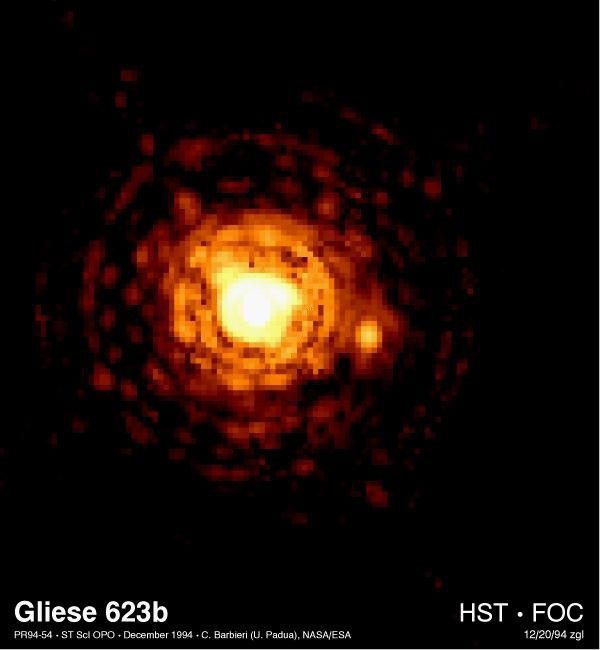This NASA Hubble Space Telescope picture resolves, for the first time, one of the smallest stars in our Milky Way Galaxy. Called Gliese 623b or Gl623b, the diminutive star (right of center) is ten times less massive than the Sun and 60,000 times fainter. (If it were as far away as the Sun, it would be only eight times brighter than the full Moon).
Located 25 light-years away in the constellation Hercules, Gl623b is the smaller component of a double star system, where the separation between the two members is only twice the distance between Earth and the Sun (approximately 200 million miles). The small star completes one orbit about its larger companion every four years.
Gl623b was first detected, indirectly, from astrometric observations that measured the wobble of the primary star due to the gravitational pull of its smaller, unseen companion. However, the star is too dim and too close to its companion star to be seen by ground-based telescopes. Hubble's view is sharp enough to separate the small star from its companion.
The new Hubble observations will allow astronomers to measure the intrinsic brightness and mass of Gl623b. This will lead to a better understanding of the formation and evolution of the smallest stars currently known. Red dwarf stars were once thought to be the most abundant stars in the Milky Way, and thus possibly a solution to the mystery of the Galaxy's "dark matter." However, recent Hubble observations show that these low mass stars are surprisingly rare.
The image was taken in visible light on June 11, 1994, with the European Space Agency s Faint Object Camera.





























